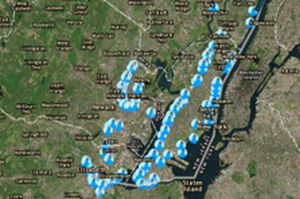Identifying remedies for the impacts of CSO’s on regional waterways
Combined sewer systems convey raw sewage and stormwater to a central waste water treatment facility. During heavy rainfalls, these systems often overflow, causing the discharge of mixed sewage and stormwater to local receiving waters.
Expert Sewer Overflow Analysis
Najarian Associates provides expert modeling services to simulate a combined sewer overflow (CSO) network. The firm’s unique engineering approach offers solutions for clients throughout New Jersey, by demonstrating associated receiving-water impacts relative to the associated water quality standards.
PVSC’S Combined Sewer Overflows Impact Assessment
Najarian Associates was contracted by NJDEP to evaluate the water quality impact of Passaic Valley Sewerage Commission’s (PVSC’s) CSO system discharges on the Passaic River. PVSC operates the largest wastewater treatment plant in New Jersey and provides sewer service for much of the lower Passaic Watershed. Typical of old municipal systems, these sewers are primarily combined and discharge to the Passaic River through 73 overflow points.
Najarian employed an innovative approach in which land-based pollutant loading generation (from both the CSO and separate stormwater drainage systems) was explicitly modeled using USEPA’s stormwater management model (SWMM). The river and estuary based pollutant transport mechanisms were then modeled using the MIT-dynamic network model (DNM). This time-varying model was adapted to the reaches of River (between Little Falls and Newark Bay), and intensive field sampling data was conducted. The two models were individually calibrated with the field data, and then linked so that they could be verified (in tandem) using data from a high flow (storm) event.
The linked models were then used to simulate one year of flows and pollutant loadings using rainfall and upstream USGS streamflow data. Results indicated that upstream sources were contributing a large majority of pollutant loads, and that the actual CSO impact was highly transitory. Based on these conclusions, funding priorities were shifted to the improvement of upstream dischargers, and CSO abatement was delayed.
Learn More About Our Services
Fill out the form below, and we will get back to you as soon as possible!

